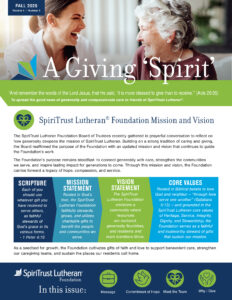Research from the Alzheimer’s Association shows that six out of ten seniors with the diagnosis of dementia will wander at some point as the disease progresses. Despite your best efforts to keep them from becoming one of those statistics, you may one day find yourself in that situation. Planning now can help you react more quickly if you are faced with such a crisis.
How to Create an Alzheimer’s Wandering Kit
One of the best ways to plan for such an emergency is to create an Alzheimer’s Wandering Kit. It is a combination of photos and information to help first responders immediately begin the search for your loved one. It also provides the media with the information they need to alert the public that a local senior is missing.
Here are a few items that should be included in your wandering kit:
- Recent Photos: Emergency responders will need to have a few recent photos of your senior loved one that are of good quality. They will share them with local media, as well as use the photos to create flyers to distribute throughout the community. A digital photo that easily can be emailed is best.
- Written Description: Along with the photos, have a written description of your loved one. It should include their physical appearance (height, weight, eye color, hair color) as well as any distinguishing characteristics. Those might include a tattoo, prominent birthmark, or any noticeable scars.
- Important Medical Information: Keep a copy of their current medication list, known allergies, medical history, physician’s contact information, and any other essential health information in your wandering kit. It will be important for first responders to have this in case medical treatment is required when your loved one is found.
- Emergency Contact Information: Make it easy for first responders and other searchers to quickly get in contact with a family member. Try to have the names and cell phone numbers of at least three people who are familiar with your loved one’s situation and can be counted on to help.
- Familiar Places: While it is never easy to predict where someone with Alzheimer’s disease may wander, compiling a list of places and addresses that are familiar to them might provide a good starting point for the search. Think about places they often spent time and may be trying to return to such as their former home, a place of employment, another family member’s house, or their place of worship.
- Vehicle Information: If your loved one has a car and still drives independently, having a description of their vehicle also is important. Take a photo of the vehicle if you are able, and also have a written description that includes the car’s make, model, year, and license plate number.
Once you have all of this information, try to keep a few copies in an easily accessed drawer or cupboard in your house. Consider providing copies to other trusted family and friends.
It also can help to speed up distribution of the information if you and a few family members have a digital version of your Alzheimer’s Wandering Kit that easily can be emailed. Storing one on your mobile phone is also a plus in case you are away from home when the crisis occurs. Remember, time is of the essence when someone with Alzheimer’s disease goes missing. Learn more information about how we can help.

